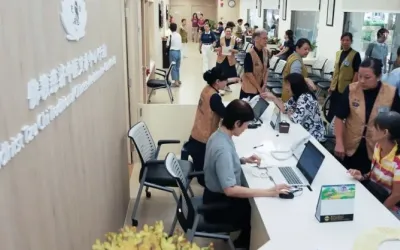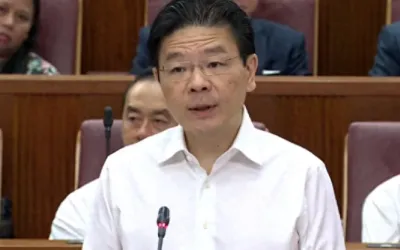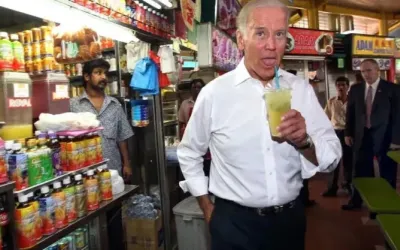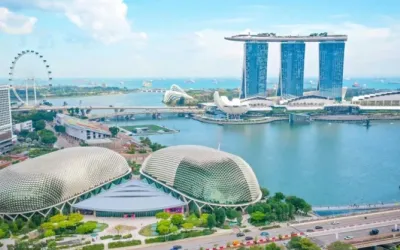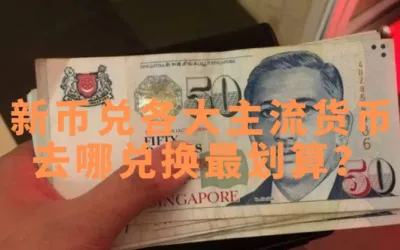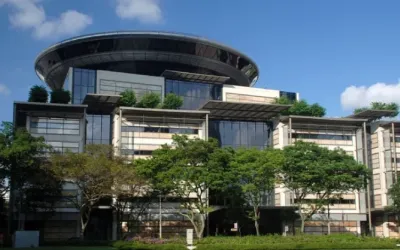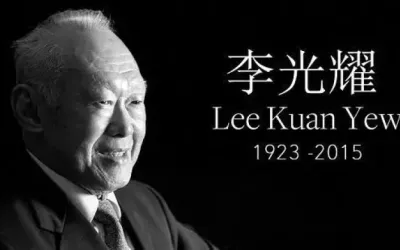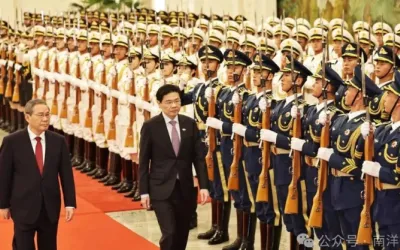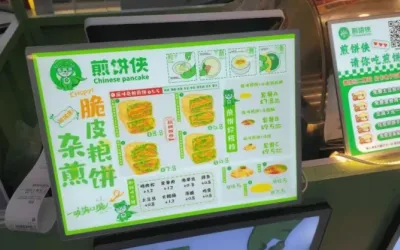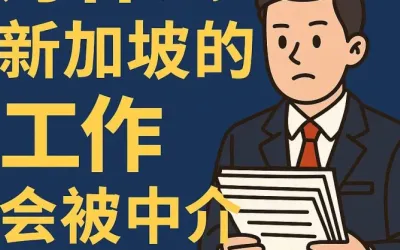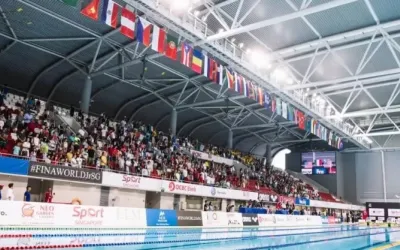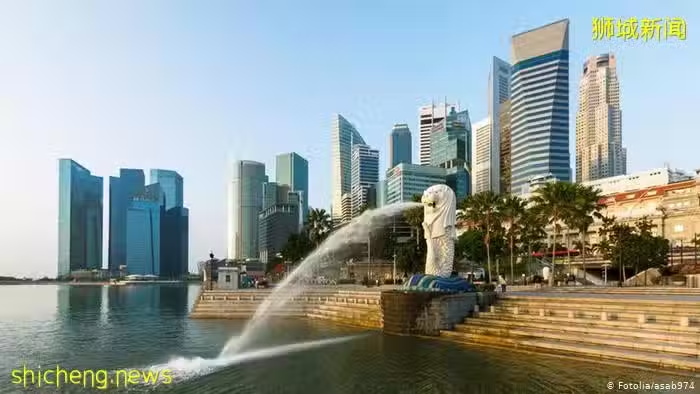
Singapore is a tiny country, so tiny you can drive across the island in just an hour. Despite its size and lack of natural resources, Singapore’s 5.6 million people enjoy one of the highest average incomes in the world, ahead of countries like Germany, France, and Japan.
新加坡是一個很小的國家,小到你可以在一個小時內駕車穿越整個島嶼。儘管面積很小且缺乏自然資源,新加坡的560萬人仍是世界上平均收入最高的國家之一,領先於德國,法國和日本等國家。
So, how did this little island get so rich?
那麼,這個小島怎麼變得如此富有呢?
Singapore doesn』t have resources like coal or oil but it does have something countries can』t buy, location. The island sits in the middle of an important trade route connecting Asia to Europe. That’s a key reason why the British decided, back in 1819, to set up a colony in Singapore. Location isn』t everything though.
新加坡沒有像煤炭或石油這樣的資源,但是它有一些國家無法購買的東西,地理位置。該島位於連接亞洲與歐洲的重要貿易路線的中間。這就是英國人在1819年決定在新加坡建立殖民地的關鍵原因。位置並不是全部。
There are several countries nearby that could have made use of their whereabouts, but they weren』t quite as successful. That’s because other ingredients go into this crazy rich Singapore recipe.
附近有幾個國家可以利用他們的下落,但是他們並沒有那麼成功。那是因為在這個瘋狂而豐富的新加坡成功秘籍中還有其他成分。
I』m at the Raffles Hotel, which is one of the most prominent icons of Singapore’s colonial history. Unlike some of its neighbors, which wanted to separate themselves from their colonial histories, Singapore kept close ties with Britain, even after independence in 1965.
我現在在萊佛士酒店,這是新加坡殖民歷史上最傑出的標誌之一。與一些鄰國希望將自己與殖民地歷史分開的新加坡不同,即使在1965年獨立後,新加坡仍與英國保持著緊密聯繫。
That decision announced to the rest of the world that Singapore was open for business. That’s important because we know now that exports help to grow and expand an economy. But back then, it wasn』t conventional wisdom.
該決定向世界其他地方宣布,新加坡開始開放。這很重要,因為我們現在知道出口有助於增長和擴展經濟。但是那時候,這不是傳統的看法。
Singapore, Hong Kong, Taiwan, and South Korea, became known as the four Asian tigers, which have grown rapidly since the 1960s. Their rise was fueled by exports, industrialization, and more crucially, big doses of government intervention. This was especially true for Singapore.
新加坡,香港,台灣和韓國被稱為四隻亞洲虎,自1960年代以來迅速發展。出口,工業化以及更重要的是政府的大量干預助長了它們的崛起。對於新加坡尤其如此。
Labor strikes were common on the island in the 1960s, even with high unemployment. On top of that, there was a housing crisis, with Singapore being home to one of the largest slum settlements in the world.
即使失業率很高,在島上工人罷工在1960年代也很普遍。最重要的是,發生了住房危機,新加坡是世界上最大的貧民窟之一。
So how do you build a more disciplined labor force to attract investment?
那麼,如何建立一支紀律嚴明的勞動力隊伍來吸引投資呢?
Well, you give them something to work for, like a house of their own, which is why one of the first Singapore government agencies set up was focused on building affordable public housing. While just nine percent of the population lived in public housing in the 1960s, that figure stands at more than 80 percent today, add in greater employer rights and strikes became extremely rare.
好吧,給他們提供了一些可以工作的東西,例如擁有自己的房屋,這就是為什麼新加坡最早成立的政府機構之一專注於建造負擔得起的公共住房。儘管在1960年代只有9%的人口居住在公共住房中,但如今這一數字已超過80%,但增加了僱主權利,罷工變得極為罕見。
At the same time, the government attracted foreign investment through tax incentives, growing the economy and easing unemployment, which fell from an estimated 14 percent in 1959 to 4.5 percent in the 1970s.
By the 1980s, Singapore was a regional manufacturing hub, and it was the world’s biggest producer of hard disk drives. But today, manufacturing makes up only about 20 percent of Singapore’s GDP.
同時,政府通過稅收激勵措施吸引了外國投資,促進了經濟增長並緩解了失業率,失業率從1959年的14%降至1970年代的4.5%。到1980年代,新加坡已成為地區製造中心,並且是世界上最大的硬碟驅動器生產國。但是今天,製造業僅占新加坡GDP的20%。
Take a look at Singapore’s growth in GDP, you can see two big surges, one beginning in the late 80s and another at the start of the new millennium. Ironically, Singapore has a downturn to thank for that. You see, in 1985, Singapore went into its first post-independence recession, prompting the government to introduce new measures. State-owned companies like telecommunications were privatized to make them more competitive.
看看新加坡的GDP增長,您會看到兩次大幅增長,一次是在80年代末開始,另一次是在新千年之初。具有諷刺意味的是,新加坡對此表示感謝。您會看到,1985年,新加坡進入了第一次獨立後的衰退,促使新加坡政府採取了新措施。電信等國有公司被私有化,以使其更具競爭力。
Then at the turn of the century, service industries like finance and insurance were further liberalized. That openness helped to grow the share of services from just 24 percent of GDP in 1985 to more than 70 percent in 2017.
然後在世紀之交,金融和保險等服務業進一步開放。開放性使服務的份額從1985年的GDP的24%增長到2017年的70%以上。
Multinational companies began to set up regional headquarters in Singapore. That attracted even bigger players, boosting Singapore’s attractiveness to corporates and in turn its GDP.
跨國公司開始在新加坡設立地區總部。這吸引了更大的參與者,從而提高了新加坡對企業的吸引力,進而提高了其國內生產總值。現在,新加坡已被列為世界上最容易經商的地方之一。
Now, Singapore is ranked as one of the world’s easiest places to do business. Singapore has been praised for transforming itself from a developing to a developed economy.
新加坡因從發展中經濟體向發達經濟體轉型而受到讚譽。
But do most Singaporeans feel rich? Well, not exactly.
但是,大多數新加坡人感到有錢嗎?好吧,不完全是。
Two of the most important reasons? The high cost of living and inequality. For five years in a row, Singapore has been named the world’s most expensive city, ahead of New York and London. That’s largely because of taxes on cars, making Singapore the most expensive place in the world to buy and run an automobile. It’s also the third most expensive place on Earth to buy clothes.
